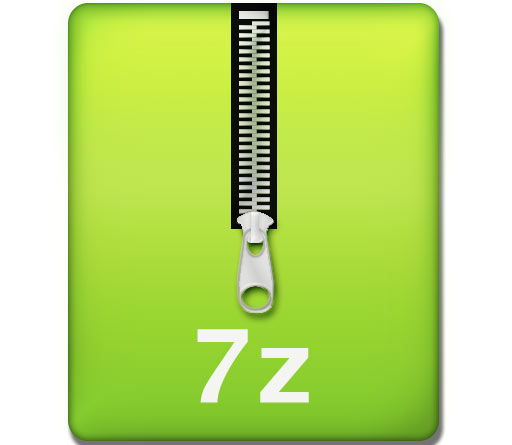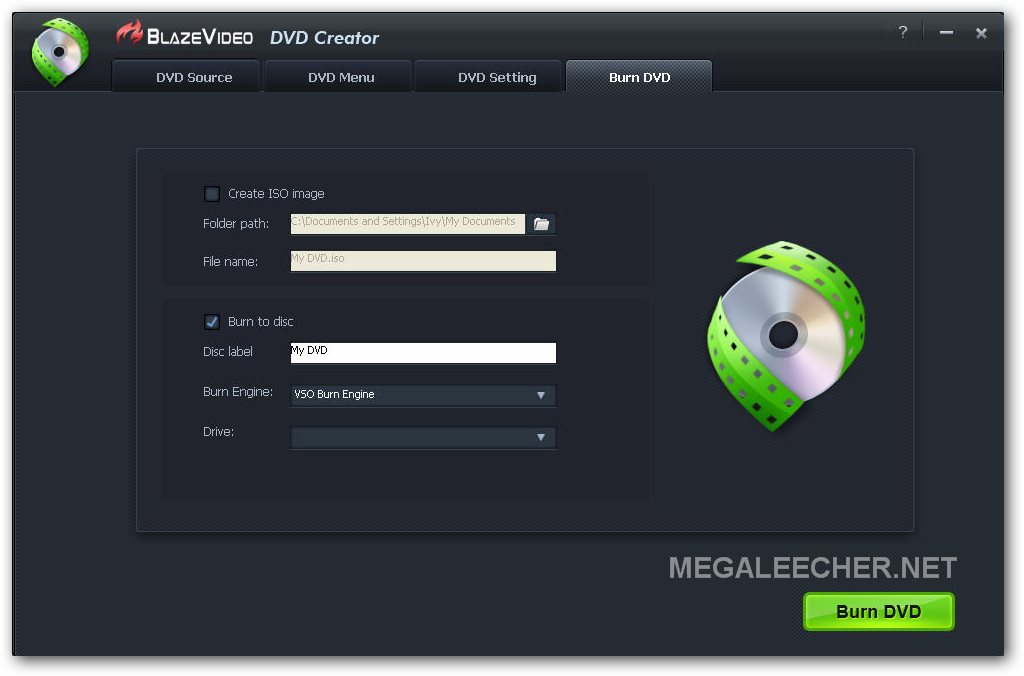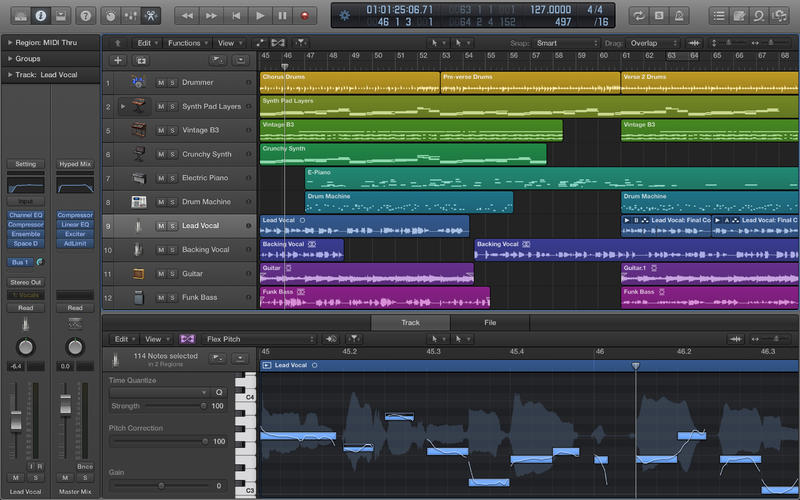Some people may not be aware, but 'download' means to retrieve off a network server. In the discussion below the network refers to the internet, and the server in question is Apple's server. Before you download be sure to. Link for backing up only refers to Mac OS X applications. If you need help finding how to backup other operating systems, be sure to ask in the appropriate forum. This article can help with determining which PowerPC operating system your Mac came with, if it is a PowerPC: This article can help with determining which Intel operating system your Mac came with if it is Intel: This tip: Has information about when Macs no longer came with installer discs, and which ones those were with Mac OS X 10.7 or later. Retail installer discs icons are included where possible, if you have an older machine that is compatible.
FotoBiz is a complete business management software for photographers. The app is designed expressly for the freelance photographer. Quickly and easily create stock photography quotes, assignment estimates and invoices. You are able to identify your home currency and bill in multiple currencies. 2018-10-22 QQ Mac版 全新升级。沟通更便捷,功能更全面,不一样的QQ为你而来。 QQ logo 首页 支持 iPad版 列表 列表 匠心之韵 清新聊人 匠心之韵. 清新聊人 立即下载 v 6.5.2 .
If the source is Apple and you can download updates to your operating system, assuming you meet the requirements given on the download page. Any source outside of Apple is suspect, and you should inquire on Apple Discussions before attempting to download such updates to determine if your update is able to be applied to your system. The following are the latest operating systems systems available for free download: 6.0.8 from any previous OS (applies to 128k, 512k, 512ke), 7.5.5 from any previous OS (applies to original II, Plus, LC, Portable, and Powerbook 100, SE/30, Classic) if your machine has the proper enablers. It is the last operating system for which you can download the full installer discs from the net until Mac OS X 10.7. 7.6.1 from 7.6 (applies to all 68030 Motorola) 8.1 from 8.0 (applies to all 68040 Motorola). 8.1 is the first HFS+ (Extended) operating system. This means 8.0 and earlier Macs can't see the content of the new file system.
8.6 from 8.5 and 8.5.1. 8.6 Startup Disk Control panel is the oldest that will boot Mac OS 9 versions. 9.2.2 (applies to select G4s, G5s, all G3s, except original 250 Mhz Powerbook from November 10, 1997 through March 14, 1998) from 9.0, 9.0.2, 9.0.4, 9.1 (applies to all PowerPC pre-G3 except some 54xx, 53xx, 52xx, 64xx, 63xx, 62xx series, and original 250 Mhz Powerbook G3), 9.2.1. Some G4s did not come prebundled with 9.2.2, and could be upgraded to 9.2.2, the ones which didn't were released after July 2002. Of those that had 9.2.2 included, only could boot into 9. No G5 could boot into 9, but all could run Classic. 9 updates which used to be available on Apple's support website can be found elsewhere according to.
9.2.1 retail includes all the firmware installers needed for Mac OS X 10.2 or later installations. Mac OS X 10.0.4 from 10.0.0, 10.0.1, 10.0.2, 10.0.3 (all G3s, except original Powerbook G3/250 which couldn't install any Mac OS X, and iMac Summer 2001 which could only install 10.2 or later in terms of Mac OS X) Mac OS X 10.1.5 from 10.1.0, 10.1.1, 10.1.2, 10.1.3, 10.1.4 (all G3s, except original Powerbook G3/250 which couldn't install any Mac OS X, and iMac Summer 2001 which could only install 10.2 or later in Mac OS X version). 10.1.5 was the first to include repair permissions utility. Mac OS X 10.2.8 from 10.2.0 through 10.2.7. (all G3s, except original Powerbook G3/250 which couldn't install any Mac OS X) (all known as Jaguar).
Be sure to if your Mac supports this operating system and has not been updated yet, and check for these other tidbits for installing 10.2 or later. 10.2.8 is the end of the line for all beige G3 and black Powerbook G3 with 9 pin serial ports not listed. 10.2.8 was the first to include USB 2 support.

And it was the last to offer Sherlock find file support. Mac OS X 10.3.9 from 10.3.0 through 10.3.8.
(all USB G3s except some Powerbook Bronze keyboard) (all known as Panther). Check for updating to 10.3 and later. 10.3.9 is the end of the line for all USB iMacs, Powerbooks, and iBooks without Firewire.
It is also the last to offer built-in index free Find File. Mac OS X 10.4.11 from 10.4.0 through 10.4.10 (all Firewire built-in with Firewire DVD.
or built-in DVD drive PowerPC Macs, and pre-October 26, 2007 Intel Macs.) (all known as Tiger). Check for updating to 10.4 and later.
Fotobiz X 10.0.6 For Mac
10.4.11 is the end of the line for Classic. See the implications of that on. Mac OS X 10.5.8 from 10.5.0 through 10.5.7 (all 867 Mhz or faster built-in processor PowerPC, and Intels prior to August 28, 2009) (all known as Leopard). Check for updating to 10.5 and later. 10.5.8 is the end of the line for PowerPC Macs (G4 & G5).
10.5 is the first to offer Boot Camp support on Intel Macs only. Offers up to iOS 5.1.1 syncing support. Mac OS X 10.6.8 from 10.6.0 through 10.6.7 (all Intel Macs.) (all known as Snow Leopard).
0.6 X 10 3
10.6.8 is the last operating system to have built-in Rosetta support for PowerPC applications. The implications of that are on. See for updating to 10.6 or later. 10.6.8 is the end of the line for CoreSolo, and CoreDuo Intel Macs. It is the last Mac operating system to be made available on DVD.

Offers iOS 6 & 7 syncing support. Mac OS X 10.7.5 from 10.7.0 through 10.7.4 (Intel Core2Duo, Xeon, Core i processor Macs) (All known as Lion) If the right hand side operating systems on the rows above do not list your operating system, you will need to buy one of those intermediate operating systems retail, assuming your machine allows that operating system by specs. Note a paid download from the Mac App Store and a USB Flash drive directly from 10.6.6, 10.6,7, or 10.6.8 is possible. Check for more on updating to 10.7 or later. A supplemental update to 10.7.5 is also available, which is mentioned on the tip.
It is the latest operating system to be made available on physical media. A Flash Drive was available during its reign at the Apple Store. Note, Rosetta is no longer available for running PowerPC applications. Offers up to iOS 9.1 syncing support.
Mac OS X 10.8.5 from 10.8 through 10.8.4 (Mountain Lion) 10.8 was released July 25, 2012 and has discussing its compatibility. A supplemental update to 10.8.2 is also mentioned on the tip. Apple is offering a paid update from 10.6.8, and any version of 10.7 to 10.8 through the Mac App Store. Offers up to iOS 9.2.1 syncing support. It is the last available operating system prior to Sierra on the Mac App Store without special request or having downloaded the operating system in question before, or purchased a Mac with the operating system in question before.
Note, Rosetta is no longer available for running PowerPC applications. Mac OS X 10.9 Mavericks, broke the the tradition that hadn't changed since 10.2, and is available free (subject certain license restrictions) for anyone from 10.6.8 through 10.8.5 as long as they meet the system requirements for 10.8, but it also may have issues with compatibility that have not yet been addressed, but have been for 10.8, simply because it just came out on October 22, 2013. Is strongly recommended for anyone upgrading to 10.9, as there is a critical security flaw in 10.9., and are also available as free updates to 10.9. This discusses the uniqueness of 10.9. Minimum hardware requirements are the same as 10.8.
Apple no longer offers this operating system except to those whose Mac came with it. 10.9.5 offers iOS 10 support.
Further iOS upgrade support is discussed on this tip: Mac OS X 10.10 Yosemite isvery similar to Mavericks, except with enhanced features for newer Macs. It has, 10.10.3, 10.10.4, and 10.10.5 as available updates. Minimum hardware requirements are the same as 10.9 and 10.8. Apple no longer offers this operating system except to those whose Mac came with it.
Mac OS X 10.11 El Capitan is also similar to Mavericks. It can be upgraded to 10.11.1, 10.11.2, 10.11.3, 10.11.4, 10.11.5, and 10.11.6 It is also the last operating system available for some Macs that may have 10.6.8 or earlier. Note, Rosetta is no longer available for running PowerPC applications. 10.8 is also available, but 10.9 and 10.10 are only available if you downloaded it before.

Mac OS 10.12 Sierra has changed the minimum hardware requirements, and minimum system to upgrade from, as is discussed in this tip. It requires a minimum of 10.7.5 be preinstalled to upgrade to directly. See for hardware requirements. It can be updated to 10.12.1, 10.12.2, 10.12.3, 10.12.4, 10.12.5, and 10.12.6 Outside of Mavericks, Yosemite, El Capitan, and Sierra it means you can't directly update free from 10.5.8 to 10.6.1, You can't directly update from 10.4.11 to 10.5.8 etc without purchasing the intermediate retail update on a CD or DVD or floppy. And the Mavericks and Yosemite 'free' update was actually more costly than the other intermediate updates already mentioned, as the full release operating systems frequently had interface changes and significant changes that altered how certain applications and drivers worked together. Usually within a major release application and driver compatibility remained consistent.
Prior to Lion the only other exception existed for Macs purchased within three weeks of a full operating system release, when certain Up To Date installation discs, also known as DropIn discs were made available to help those update who bought a new Mac just as the operating system transitioned. Those discs were only allowed to be used by certain Macs within that time frame. DropIn discs were included with new Macs after the release.
Either way, DropIn, or UpToDate Macs had the advantage of being able to run both the new and old operating system. Up To Date discs could be requested from Apple for the Macs that qualified. After that date a hardware change in a Mac model would almost always mean the prior operating system would no longer be useable on the new Mac. It has been found though you can run 10.6 Server on Macs that shipped new with 10.7 or later using.
All of this does not mean that some operating systems can't be skipped when upgrading from one retail to another and purchasing that new retail release. A person buying 10.6 retail can install on top of 10.4.4 or later, as long as it is an Intel Mac without having to purchase 10.5. A person buying 10.7 USB flash drive can install on an erased hard drive of any Intel Xeon, or Core2Duo or better Mac that shipped with 10.4.4 or later and has 2 GB of RAM, though has to have 10.6.6 or later to upgrade and install to 10.7. The Mac App Store is another means of obtaining 10.7, and that's only available in 10.6.6 and later. If uncertain if a possible skip is possible, ask on the discussion forum relevant to the upgrade.
Blue and White G3s, and PCI PowerMac G4s could not boot off an external DVD drive, but could have these operating systems installed if they had a built-in DVD drive, or you are able to find the limited edition Media Exchange Program CD-ROM version of 10.4. Intel Macs could only have 10.4 installed from the prebundled discs that came with them, and no retail 10.4 would install. March 15, 2010 to July 19th 2011 Macs could not install the retail 10.6, but could install Lion retail. July 20, 2011 and later Macs could only install 10.7 or later retail releases.
The date of the Mac is based on when the hardware was refreshed. The tip next to the 10.6 operating systems will tell you which Macs can install 10.6, and which can only install 10.7. Note: Additional limitations like above are indicated in Apple article. Many of the versions listed in this user tip are updaters, not upgraders. Software update, upgrade-what's the difference?
- OS X: Updating OS X and Mac App Store apps - Reference releases; update vs. Upgrade Recent system versions will only install the components necessary to take it to a later version of the same system and do not contain a complete operating system in the package. Apple no longer offers this operating system except to those whose Mac came with it. For the systems with this comment the system is still available to anybody who downloaded ('purchased' for free) it when it was still available, not just people who had it as the base system for a new computer. Apple Footer.
This site contains user submitted content, comments and opinions and is for informational purposes only. Apple may provide or recommend responses as a possible solution based on the information provided; every potential issue may involve several factors not detailed in the conversations captured in an electronic forum and Apple can therefore provide no guarantee as to the efficacy of any proposed solutions on the community forums.
Apple disclaims any and all liability for the acts, omissions and conduct of any third parties in connection with or related to your use of the site. All postings and use of the content on this site are subject to the.